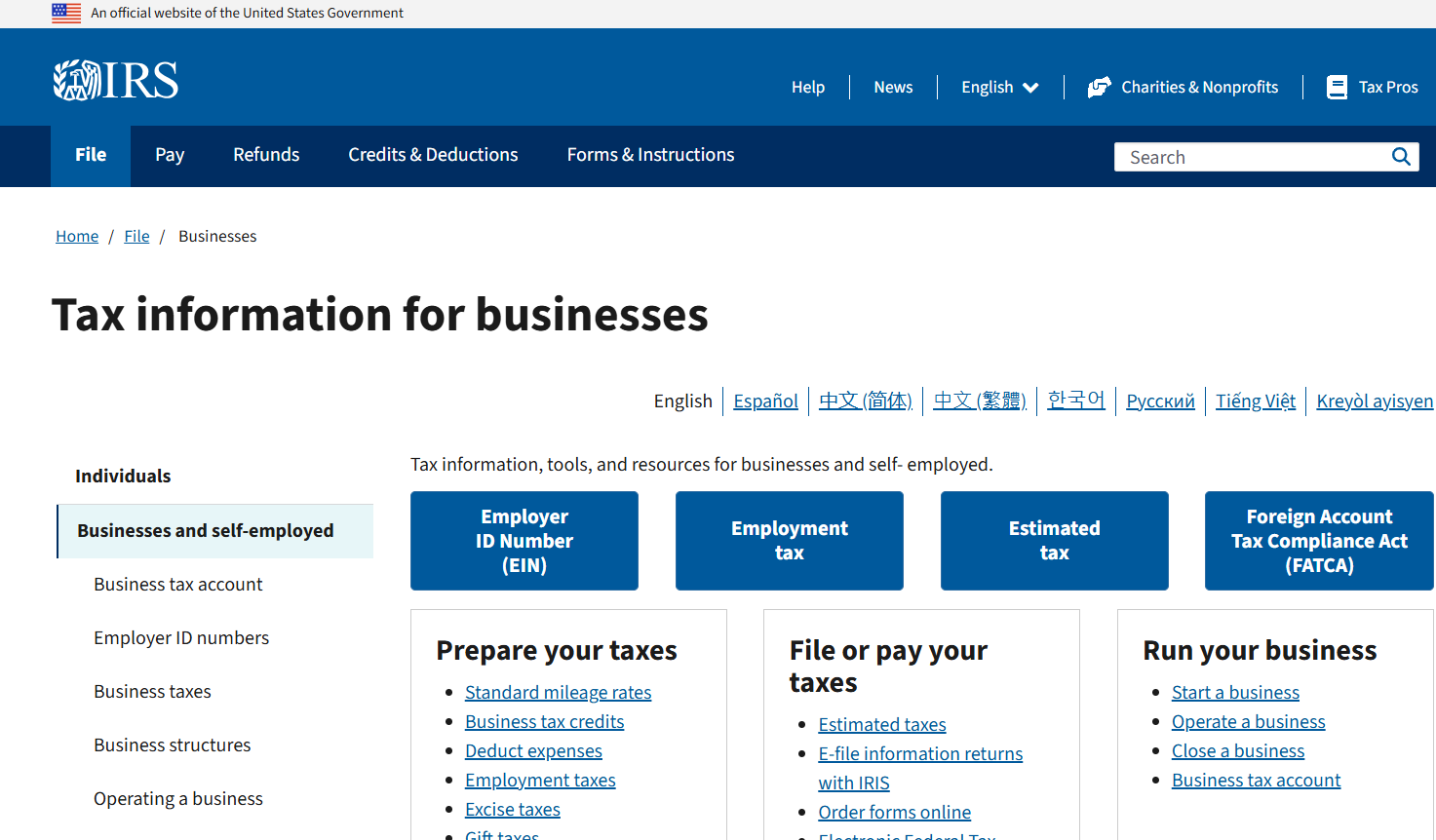S Corporations: Wages Paid to Shareholders Must Be Reasonable
By Gregory S. Dowell
Shareholders of S corporations who provide services to the S corporation must take a reasonable salary. After all, S corporations are supposed to be a separate legal entity; why would anyone work for free? The law is very simple and very logical, and yet it remains as one of the most abused rules that we see in practice. Sadly, many shareholder-employees of S corporations run afoul of this tax law due to receiving bad and very short-sighted advice from their tax preparers.
The reason that many S corporation shareholder-employees do not claim reasonable compensation is to minimize or avoid the amount of social security and medicare taxes that they pay. It works like this: The net income from an S corporation flows through and is taxed on the individual income tax returns of the shareholders of the S corporation. The net income passed through to the shareholder from an S corporation is subject to income taxes but is not subject to social security or medicare taxes. In Example #1, if no wages are paid to the shareholder-employees, then all of the net income flows to the shareholder-employee and is only subject to income taxes. On the other hand, in Example #2 the shareholder-employee takes a wage. In this case, the shareholder-employee pays social security and medicare taxes (as well as income taxes) on the wages, and the net income after the wages also flows into the shareholder-employee’s individual income tax return, where it is subject to income taxes. The shareholder-employee in Example #1 above has effectively avoided paying social security and medicare taxes, whereas the shareholder-employee in Example #2 has paid roughly the same amount of income taxes and, in addition, has paid social security and medicare taxes.
As you can see, this is patently unfair. When no wages, or unreasonable low wages, are claimed, the shareholder-employee of an S corporation has a distinct advantage over the sole proprietor or the partner in a partnership (or a member in an LLC that is being taxed as a partnership). In the case of a sole proprietor or a partner in a partnership/LLC, those individuals pay social security and medicare taxes (as well as income taxes) on the entire amount of net income from the business. To compare this to a shareholder-employee of an S corporation, it would mean that the shareholder-employee would need to claim the entire amount of net income as “reasonable compensation” in order to level the playing field with a sole proprietor or a partner.
It seems that every year the IRS threatens to get serious about this issue, but with few exceptions, they have been more talk than walk. In many cases, it is a relatively easy issue for the IRS to ferret out in a return – it is a matter of comparing the line for officer’s salary with the line for net income; too much net income compared to officer’s salary would be a red flag that the issue should be investigated.
While the IRS has been slow to react, they have started stirring the pot. In a recent case involving the shareholder-employees of (get this!) a CPA firm that operated as a S corporation, the Supreme Court refused to review a decision of the Court of Appeals for the Eighth Circuit (Watson, P.C. v. U.S.), which held that an S corporation paying unreasonably low salary was liable for employment taxes on dividends reclassified as salary. The Eighth Circuit, which affirmed the decision of the district court, found that the shareholder-employee’s $24,000 salary in 2002 and 2003 was unreasonably low and allowed the IRS to reclassify as salary over $67,000 in dividend payments to the officer during each of those years. This resulted in the corporation owing social security and medicare taxes on the reclassified dividend payments.
In many ways, the crafting of the tax code is to blame for the inconsistent treatment of S corporation shareholder-employees. Tax law calls for shareholder-employees to receive “reasonable compensation”. The issue, of course, is what is reasonable to one person may not be reasonable to another person. Some factors the courts have considered in determining reasonable compensation of shareholder-employees are as follows:
- training and experience;
- duties and responsibilities;
- time and effort devoted to the business;
- dividend history;
- payments to non-shareholder employees;
- timing and manner of paying bonuses to key people;
- what comparable businesses pay for similar services;
- compensation agreements; and
- use of a formula to determine compensation.
Specific facts of the case at hand, reprinted from Thomson Reuters RIA Checkpoint, are as follows:
Facts. In ’92, David E. Watson joined with Tom Larson, Jeff Bartling, and Dale Eastman to form an accounting firm named Larson, Watson, Bartling & Eastman (“LWBE”). On Oct. 11, ’96, Watson incorporated David E. Watson, P.C (DEWPC) as an Iowa Professional Corporation (PC). Larson, Bartling, and Eastman also formed PCs, and on Oct. 11, ’96, each of the four partners replaced their individual ownership in LWBE with ownership by their respective PC. On the same date, LWBE, DEWPC, and Watson entered into an employment agreement whereby Watson became DEWPC’s employee and agreed to provide his accounting services exclusively to LWBE.
By ’98, Paul Jeffer, PC, had replaced Dale Eastman, PC as a partner, causing LWBE to be reformed as Larson, Watson, Bartling, and Jeffer (“LWBJ”). The change did not significantly alter the work performed by the firm, or the employment arrangement between the firm, DEWPC, and Watson.
During 2002 and 2003 (the years at issue), Watson provided accounting services exclusively to LWBJ and its clients as an employee of DEWPC.
Since its inception, DEWPC had elected to be taxed as an S Corporation, and Watson had been its sole shareholder, employee, director, and officer. Watson was the only person to whom DEWPC distributed money in 2002 or 2003. At shareholder meetings Watson held with himself in 2000–2002, he authorized for himself a salary from DEWPC in the amount of $24,000 annually. In 2002 and 2003, DEWPC paid Watson $24,000 in funds designated as salary and paid federal employment taxes on that amount.
On Feb. 5, 2007, IRS assessed $48,519 in taxes, penalties, and interest against DEWPC for the eight calendar quarters of 2002 and 2003. It made these assessments after it determined that portions of the dividend distributions from DEWPC to Watson should have been characterized as wages paid to Watson that were subject to employment taxes. DEWPC later paid $4,063.93 toward these assessments and then filed a claim for refund of the payments. IRS denied the claim and DEWPC sued in district court.
District Court decision. Before the district court, DEWPC argued that IRS did not have the authority to recharacterize any of the dividend payments as compensation. However, the district court found that DEWPC’s position was undermined by IRS revenue rulings and case law. Adopting the conclusions of IRS’s expert, Igor Ostrovsky, the district court determined that, for each of the years 2002 and 2003, the reasonable amount of Watson’s remuneration for services performed was $91,044. It thus recharacterized over $67,000 in dividend payments in each of those years as compensation.
Eight Circuit proceeding. Before the Eighth Circuit, DEWPC argued that the district court erred in allowing an Ostrovsky to testify as an expert witness for IRS on the issue of compensation. Second, it argued that it was improper for the district court to characterize $91,044 as “wages” for the purposes of assessing FICA tax in 2002 and 2003.
DEWPC argued that the district court erred in allowing Ostrovksy to testify as an expert witness on the issue of reasonable compensation because he was not competent to testify on that issue. Specifically, DEWPC asserted that Ostrovsky was not qualified, changed his opinion, relied on insufficient underlying facts, and used flawed methods in rendering his opinion.
The Eighth Circuit rejected these arguments. It found that even if Ostrovksy’s education and training were not specifically tailored to compensation issues, he had demonstrated practical experience qualifying him as an expert in the field. Accordingly, the Eighth Circuit held that the district court did not abuse its discretion in determining that Ostrovsky was qualified to render an expert opinion on Watson’s compensation.
DEWPC also asserted that Ostrovsky was not a competent expert witness because his opinion as to the value of Watson’s services changed over the course of the proceedings. Ostrovsky did revise his report before arriving at his final estimate but DEWPC put forth no authority supporting its contention that Ostrovky’s revised opinion rendered his testimony incompetent.
DEWPC also argued that Ostrovsky failed to consider certain facts and used flawed methods. The Eighth Circuit found that Ostrovsky did not fail to consider a plethora of facts rendering his opinion fundamentally unsupported. As for the flawed methods argument, DEWPC could have addressed this through cross-examination or by presenting its own expert.
When it determined the amount that constituted remuneration for employment, the district court required DEWPC to prove it paid Watson reasonable compensation, which DEWPC claimed was error. According to DEWPC, because the district court applied an incorrect legal standard, it incorrectly found that $91,044 constituted Watson’s wages in 2002 and 2003. To buttress this argument, DEWPC repeatedly asserted that there is no statute, reg, or rule requiring an employer to pay minimum compensation. And, by requiring proof of reasonable compensation, DEWPC argued, the district court imposed a minimum compensation requirement. Rather than looking to whether compensation was reasonable, DEWPC contended that the district court should have focused on taxpayer intent when characterizing the payments.
The Eighth Circuit noted that while the reasonable compensation issue normally comes up in determining whether a business is attempting to deduct too high an amount of compensation, IRS finds the concept equally applicable to employment tax cases. For example, in Rev Rul 74-44, 1974-1 CB 287, IRS concluded that dividends received by an S corporation’s two sole shareholders were wages for which the corporation was liable for FICA, FUTA and income tax withholding. In Joseph Radtke v. U.S., (DC WI 4/11/89) 63 AFTR 2d 89-1469, aff’d, (CA 7 2/23/90) 65 AFTR 2d 90-1155, a district court determined that certain funds designated as dividends were actually compensation for which an S corporation owed employment taxes.
The Eighth Circuit said that the district court properly found that DEWPC understated wage payments to Watson by $67,044 based on the following evidence:
(1) Watson was an exceedingly qualified accountant with an advanced degree and nearly 20 years experience in accounting and taxation;
(2) he worked 35-45 hours per week as one of the primary earners in a reputable firm, which had earnings much greater than comparable firms;
(3) LWBJ had gross earnings over $2 million in 2002 and nearly $3 million in 2003;
(4) $24,000 is unreasonably low compared to other similarly situated accountants;
(5) given the financial position of LWBJ, Watson’s experience, and his contributions to LWBJ, a $24,000 salary was exceedingly low when compared to the roughly $200,000 LWBJ distributed to DEWPC in 2002 and 2003; and
(6) the fair market value of Watson’s services was $91,044.
DEWPC urged that instead of focusing on reasonableness, the district court should have focused on DEWPC’s intent. The Eighth Circuit acknowledged that taxpayer intent, like reasonableness, is usually part of a Code Sec. 162(a)(1) compensation deduction analysis. As the language of Code Sec. 162(a)(1) suggests, a deduction may be made if salary is both (1) “reasonable” and (2) “in fact payments purely for services.” (Reg. § 1.162-7(a))
The Eighth Circuit did not think intent was the determining factor for characterization purposes. It said, however, that even if intent controls, after evaluating all the evidence, the district court specifically found “Watson’s assertion that DEWPC intended to pay Watson a mere $24,000 in compensation for the tax years 2002 and 2003 to be less than credible.” The Appeals Court said that this finding as to DEWPC’s intent was not clearly erroneous.
Accordingly, the Eighth Circuit affirmed the district court.
Decision now final. The Supreme Court has declined to review this case. Accordingly, the Eighth Circuit’s decision is now final.
It is an interesting case, to say the least. There remains much grey area, of course, and every S corporation should be looked at on a case-by-case basis. In general, though, this case affirms everything we have ever advised our clients who are shareholder-employees of S corporations. First, don’t be unreasonable with your expectations about the taxes that should be paid (in other words, don’t be greedy). Second, understand what the tax law says and what the obvious parameters are (see the discussion above about how a sole proprietor or partner would be treated with regard to social security or medicare taxes). Third, take reasonable tax positions because you don’t want to spend your precious time and resources battling indefensible tax positions.










